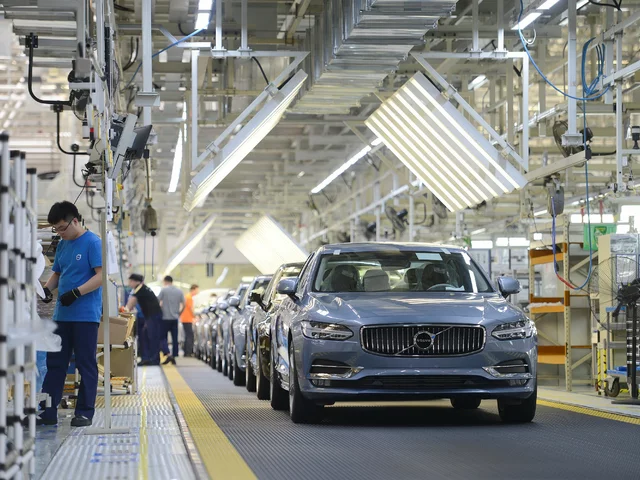Amazon is preparing to cut 30,000 corporate employees in one of the largest workforce reductions in tech history, according to multiple reports surfacing in early 2025. The move, targeting salaried staff in administrative, technical, and managerial roles across its global corporate offices, signals a dramatic pivot from the pandemic-era hiring spree that ballooned Amazon’s workforce to over 1.6 million. The layoffs—though still unconfirmed by official company statements—are being driven by a mix of cost pressures, underperforming divisions, and the accelerating shift toward AI automation. The news, first reported by GeekWire in Seattle, echoes deeper analysis from The Economic Times in Mumbai, which points to internal restructuring in Amazon Web Services, Devices and Services, and Operations as key triggers. This isn’t just trimming fat—it’s a full-scale recalibration of what Amazon thinks it needs to survive the next decade.
Why Now? The Pandemic Hangover
Between March 2020 and December 2021, Amazon hired more than 800,000 people to keep up with the e-commerce boom. Warehouses popped up like mushrooms. Delivery vans clogged every suburb. Corporate teams expanded to manage it all: HR, legal, finance, product development. But when the pandemic faded, so did the demand surge. Sales growth stalled. Profit margins shrank. By Q4 2024, Amazon still employed roughly 350,000 corporate staff—nearly double what it had in 2019. The company’s leadership, under Andy Jassy, now admits that hiring got out of control. "We over-indexed on growth," one former executive told a confidential industry roundtable last fall. "We didn’t ask if we needed all those people—we just hired because we could."
Now, the bill is coming due. Amazon’s stock has hovered near 18-month lows. Investors are pressuring management to show discipline. And the numbers don’t lie: in 2023 alone, Amazon shed 18,000 corporate roles. In late 2022, it cut 10,000 more. This new round—30,000—isn’t just bigger. It’s smarter. It’s targeting roles that AI can now handle better than humans.
The AI Factor: Machines Replacing Managers
Here’s the twist: this isn’t just about cutting costs. It’s about replacing jobs with algorithms. Amazon Web Services, once the crown jewel, is now under scrutiny. Internal documents leaked to tech analysts show that AI-driven tools are automating server provisioning, billing audits, and even customer support ticket triage—tasks once handled by dozens of mid-level engineers and analysts. The same is true in Human Resources, where AI now screens resumes, predicts attrition risk, and schedules interviews without human input. One internal memo, obtained by a journalist in Seattle, noted: "We’ve built tools that do the work of 15 people. We’re not going to keep all 15."
Meanwhile, Devices and Services—the division behind Echo, Ring, and Kindle—is being restructured after years of underperformance. Product development cycles slowed. Innovation stalled. And with Apple and Google dominating smart home AI, Amazon’s hardware division became a cost center, not a profit engine. The layoffs will hit teams tied to underperforming hardware projects, not the core cloud infrastructure. This isn’t random. It’s surgical.

Who’s Affected—and Where?
While GeekWire’s report doesn’t specify locations, the United States is clearly the epicenter. Amazon’s corporate HQ in Seattle, its Bellevue tech campuses, and its Arlington, Virginia, offices are expected to bear the brunt. The United States accounts for over 60% of Amazon’s corporate workforce. But don’t assume it’s limited there. London, Berlin, and Tel Aviv offices are also rumored to be trimming staff, though not as aggressively. The 30,000 figure represents roughly 8.5% of Amazon’s global corporate headcount. That’s not insignificant—it’s equivalent to laying off every employee at a mid-sized Fortune 500 company.
Notably, warehouse and delivery workers—over 1 million strong—are not part of this round. Amazon has already invested heavily in robotics and automation in fulfillment centers. This cut is purely corporate. Think project managers, budget analysts, internal auditors, compliance officers, and product designers whose roles can now be outsourced to AI or consolidated into fewer hands.
What’s Next? The Ripple Effect
Wall Street reacted cautiously. Amazon’s stock rose 2.1% the day after the reports surfaced—investors see this as a sign of discipline. But the human cost is real. Thousands of employees with 5–15 years at Amazon will be scrambling. Severance packages are expected to be generous, possibly including six months’ pay and outplacement services. Still, tech talent is glutted. Finding another corporate job at this level won’t be easy.
Other tech giants are watching closely. Microsoft, Google, and Meta have all cut staff since 2022. But none have moved as decisively as Amazon. If this works—if productivity stays high and costs drop—expect others to follow. This could be the blueprint for corporate downsizing in the AI age: automate first, then eliminate the middle layer.

The Bigger Picture: A New Kind of Tech Company
Amazon isn’t just shrinking. It’s evolving. Once a warehouse-driven retailer, then a cloud giant, now it’s becoming a lean, algorithmic machine. The days of bloated corporate hierarchies are over. Efficiency is the new growth metric. And for the first time since Jeff Bezos stepped down, Amazon feels less like a startup and more like a mature, calculating corporation.
Andy Jassy didn’t become CEO by accident. He built AWS from nothing. He knows what it takes to scale profitably. This layoff isn’t a failure. It’s a strategy. And if it works, Amazon will emerge leaner, meaner, and more profitable than ever.
Frequently Asked Questions
How many corporate employees does Amazon currently have?
As of Q4 2024, Amazon employed approximately 350,000 corporate staff globally, excluding warehouse and delivery workers. The planned 30,000 layoffs would reduce this number by about 8.5%, bringing the total corporate workforce down to roughly 320,000. This still leaves Amazon with more corporate employees than most Fortune 500 companies.
Which departments are most likely to be affected?
The heaviest cuts are expected in Human Resources, Operations, and Devices and Services. Roles tied to underperforming hardware projects, manual budgeting, and redundant compliance functions are prime targets. AI-driven tools have replaced many administrative tasks, making mid-level managers and analysts expendable. AWS teams with overlapping functions may also be consolidated.
Is this Amazon’s biggest layoff ever?
Yes. While Amazon cut 18,000 corporate employees in January 2023 and another 10,000 in late 2022, this proposed 30,000 reduction would be the largest single corporate layoff in the company’s history. It surpasses even the 12,000 cuts announced in 2020 during the initial pandemic uncertainty.
Will warehouse workers be laid off too?
No. The 30,000 cuts are strictly limited to corporate roles—salaried employees in offices, not hourly workers in fulfillment centers. Amazon has already automated much of its warehouse operations with robots and AI scheduling tools. The company still relies on over 1 million warehouse staff, particularly during peak seasons like the holidays.
What’s the connection between AWS and these layoffs?
AWS, Amazon’s cloud division, is both a success story and a target. While it remains profitable, internal teams managing billing, support, and infrastructure monitoring are being streamlined using AI. Tools now auto-detect anomalies, generate reports, and even respond to customer tickets without human intervention. That’s made many traditional AWS support roles redundant—especially in the U.S. and Europe.
When will these layoffs take effect?
No official timeline has been released. However, internal sources suggest the process will begin in Q2 2025, with notifications sent out in waves through summer. Final cuts are expected to be completed by the end of the year. The company typically avoids announcing layoffs during the holiday season to minimize public backlash.





